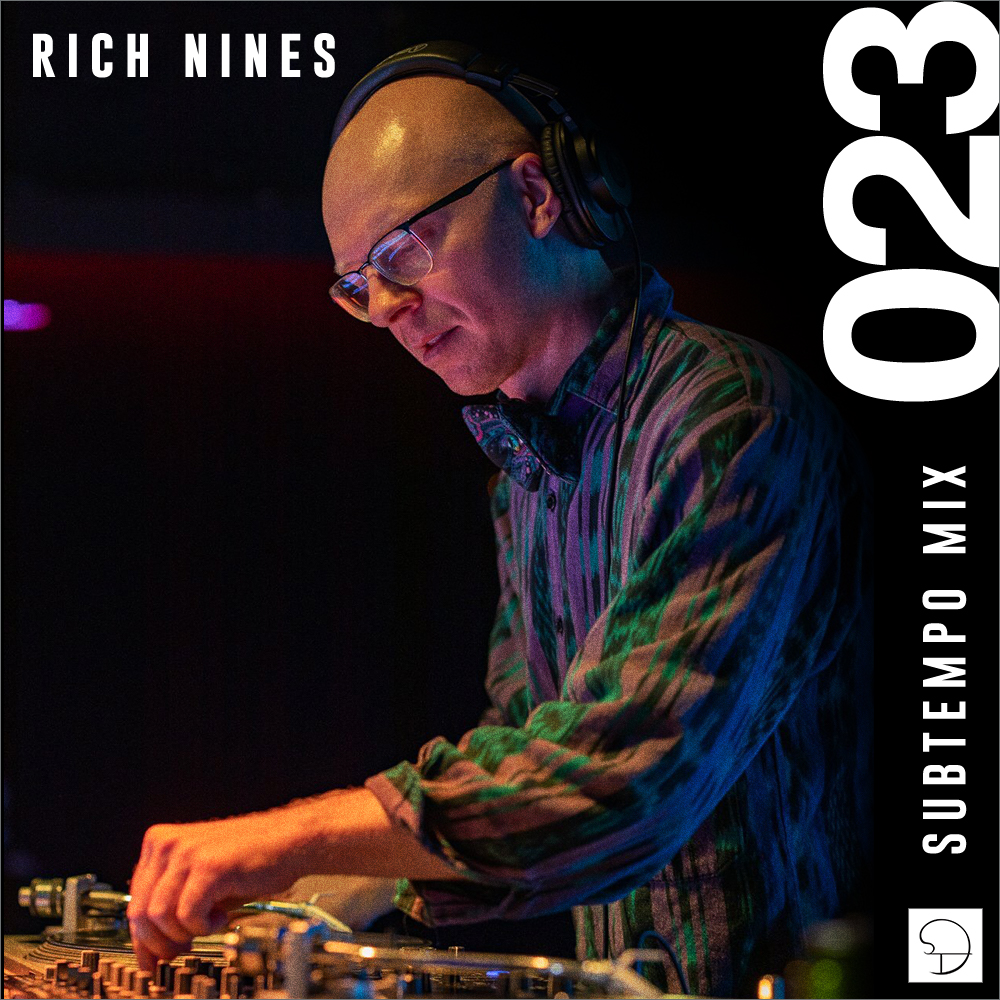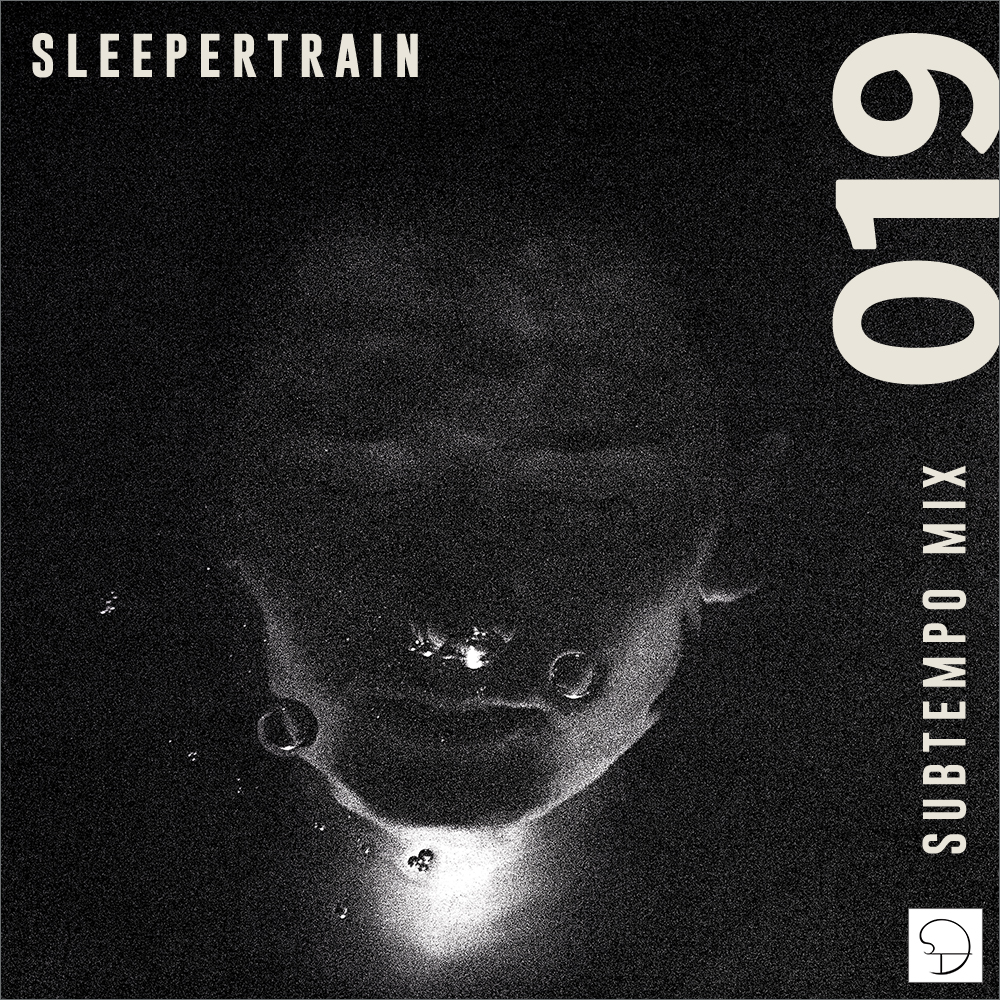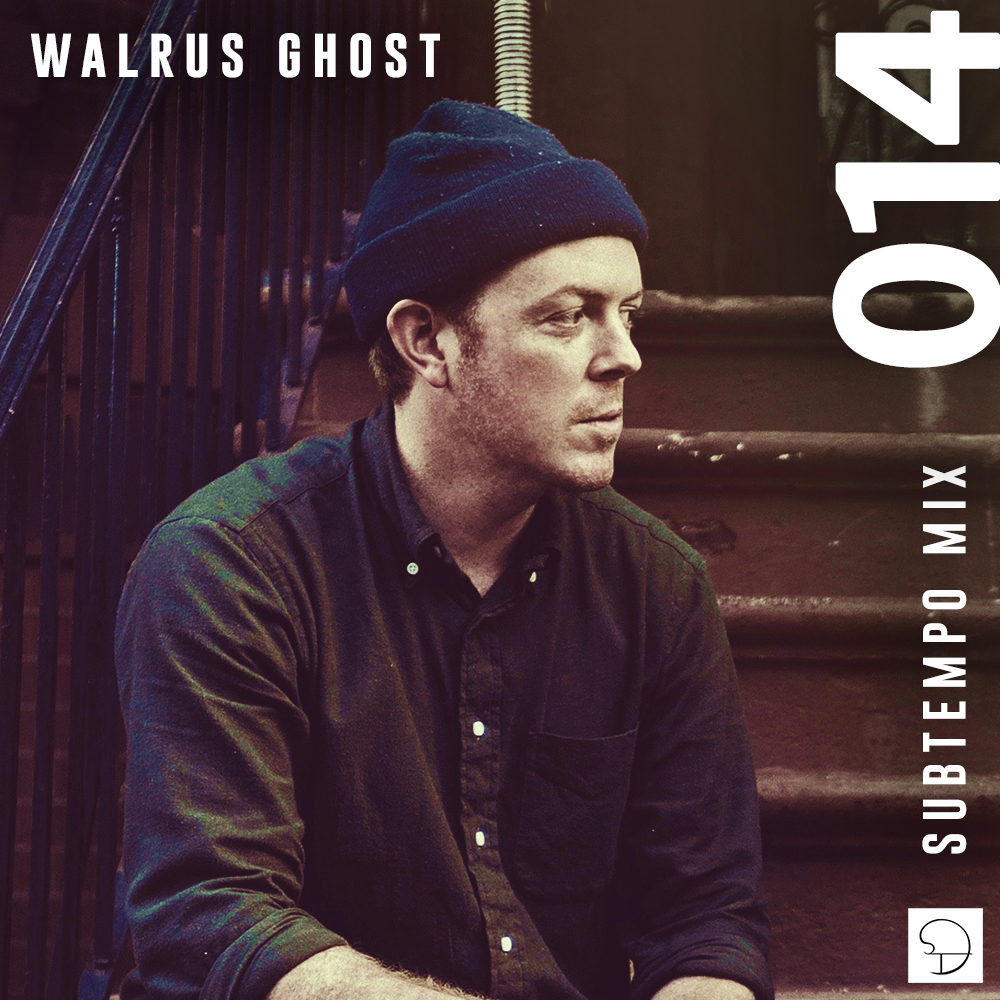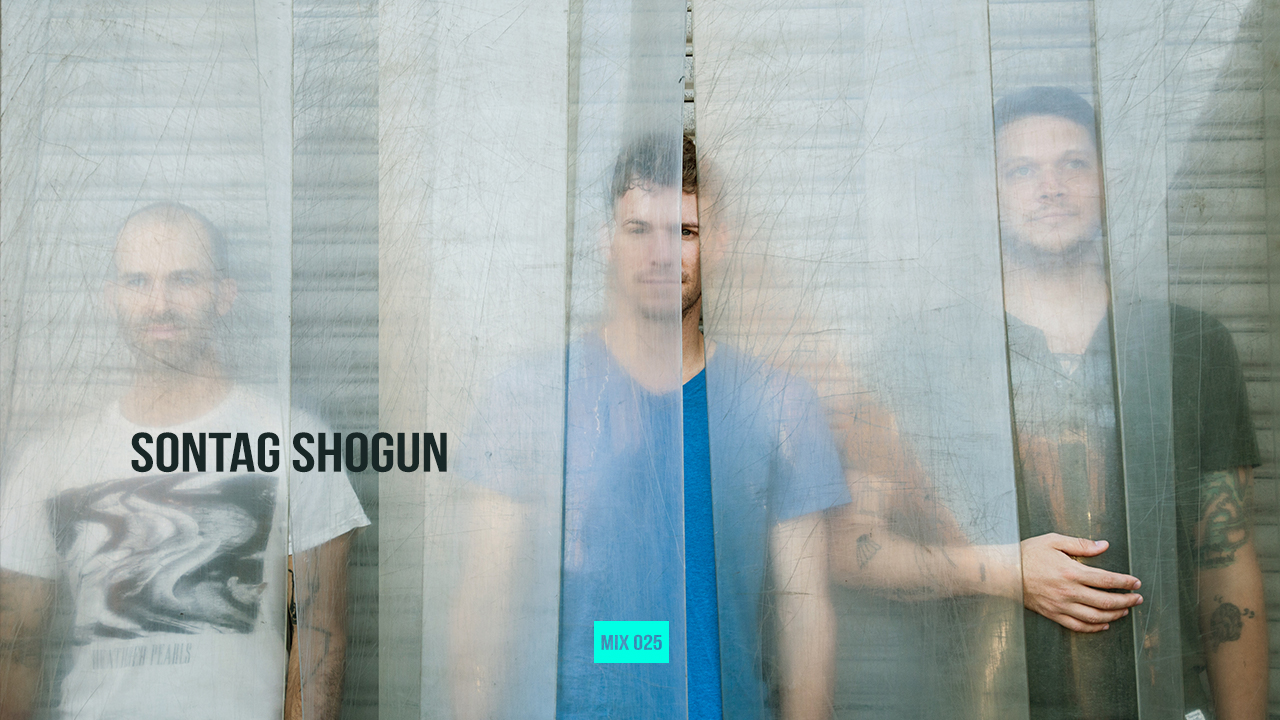
Sontag Shogun
Subtempo Guest Mix 025
Bio
Sontag Shogun is a collaborative trio that makes use of analog sound treatments and nostalgic solo piano compositions in harmony to depict abstract places in our memory. Textures built from organic materials such as sand, slate, boiling water, brush and dried leaves, both produced live in performance and recorded to weathered 1/4" tape warm up the space between lush piano themes. All of which is abstracted coolly in the reflective digital space of treated vocals and a live-processed feed from the piano. Jesse Perlstein, Jeremy Young & Ian Temple, continue to experiment with form of both recorded work and performance from their three respective cities (LA, Montreal and NYC).
Hi Jesse, first of all, thank you for taking the time to put together this mix for us and for the interview.
No sweat! Gave me something to do amidst the limbo.
I wanted to start by asking you about the mix. How, where, and when did you record it?
So when I DJ I always use vinyl b/c the tactility helps me connect to the experience and have something to do with my body in the booth other than twirl/gyrate or stare at a screen and move a cursor. But when I make mixes it's a more meditative, thoughtful process. I get to try things out and edit as I go. Sometimes the process takes weeks! I just build overlapping tracks in Ableton and just do some dicing, fading, and (rarely delay) to stitch it all together.
When you sent over the mix it had this working title “We always climb out of the valley”. Is there a theme for this mix? What can you tell us about where that idea comes from?
At first, it’s just a nod to the form of the mix; it starts upbeat, goes low/ambient, and finally comes back up. I also wrote the working title during a slump of quarantine, trying to remind myself that we would come out on the other side (or climb back up). It’s a tried-and-true narrative convention and it is one we peddle to our cyclical detriment. If we don’t break the cycles of abuse, racism, and violence we will be doomed to continue to climb up and down from a valley of our own making. We need to stop pretending we have overcome the problems in our country (or our world) and celebrating the change in optics. So basically the mix started as a ‘we-can-overcome-covid’ to a commentary on our cyclical patterns of oppression and evil that we often resign ourselves to. I wouldn’t say the mix itself is carefully crafted to propel that message, but it is what I think of since this mix was started before George Floyd’s death and is now being released in a time where it is nearly impossible to ignore how bad it’s been.
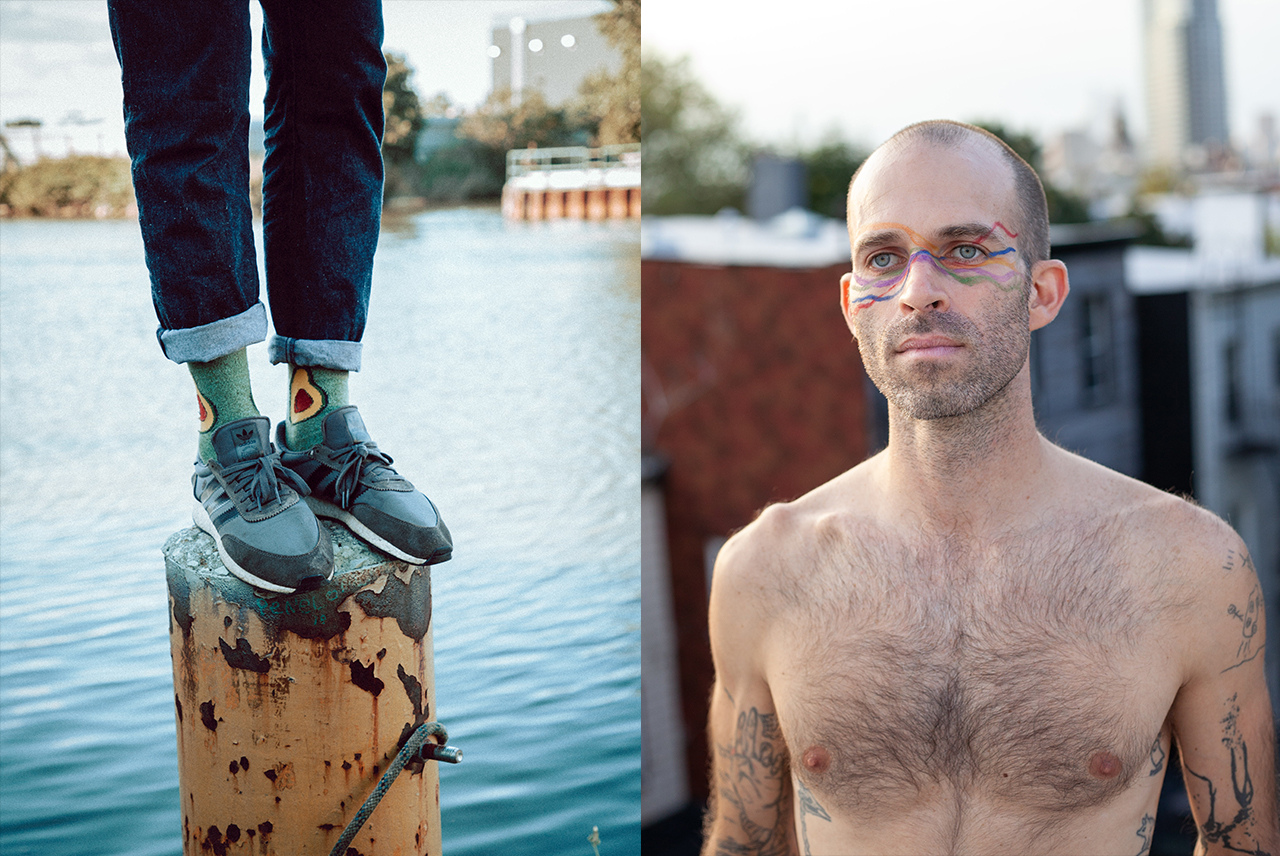 Jesse Perlstein is the man behind the mix, representing Sontag Shogun. Photo Alison Schopmeyer.
Jesse Perlstein is the man behind the mix, representing Sontag Shogun. Photo Alison Schopmeyer.
The music is quite a lot more upbeat than what you produce as Sontag Shogun? Do you find inspiration in a lot of different music?
Well, Sontag can be pretty upbeat (see: "Cages"), especially our live sound, but yeah, generally speaking, we have a more dreamy airy quality that pays tribute to the instrumental ambient neo-classical gods. But I think we pull from a lot of genres. Ian is heavily influenced by jazz and classical music while Jeremy listens to a lot of hip-hop and esoteric sound art and I devour R&B and disco and world music, constantly finding new ways to use my voice from what i learn. There's so much to learn from diverse artists--we've never wanted to be trapped in an echo chamber.
Tell me about the band - it’s three of you, right?
Yeah. There's Jeremy Young (oscillators, piezo'd surfaces, reel-to-reel) and Ian Temple (piano/keys) and myself (vox & field recordings-on-cassette).
How did you meet?
Well, I grew up with Jeremy in NY and we met Ian up in Montreal while attending university. we all lived together in an apt. on St. Laurent and started making some terrible songs for fake bands (like The Don Johnsons, which played one notoriously horrible performance) and we've been really close friends and collaborators ever since.
Do you all live in NY?
We used to but Jer moved back to Montreal ~4 years ago and I moved to LA right before Covid broke 'the machine'. Ian is still based in Brooklyn and I think we'll always see NYC as home-base for the project and we often convene there to record and rehearse for tours.
What led to starting the band?
Well, we had a 6-piece band prog/post-rock band called [the] slowest runner [in all the world]. It was great music but writing music for a six-piece (strings, guitars, drums, piano, etc) was a lot of energy and sometimes constraint. So sometimes the three of us would get together to do more free-form experimentation to keep from getting musically burnt out and we'd perform at smaller DIY venues in Montreal and Brooklyn, moonlighting as Sontag Shogun. It wasn't a project we took very seriously until TSRIATW broke up that we had all this compositional and performative energy w/o an outlet so we funneled it into Sontag and started playing and writing our first record, Tale.
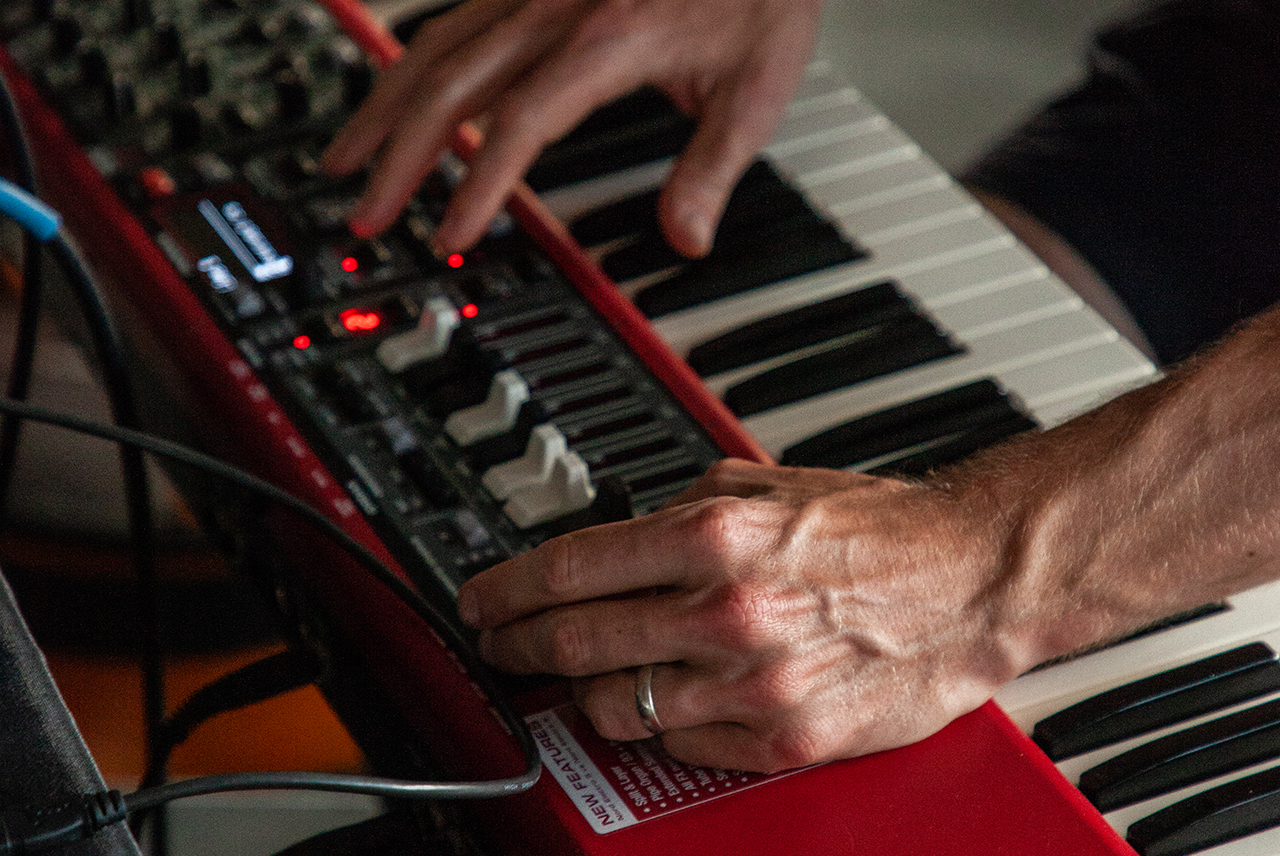 Ian temple is the man for the keys. Photo credit: Alison Schopmeyer.
Ian temple is the man for the keys. Photo credit: Alison Schopmeyer.
Ambient music can be quite a solitary, meditative pursuit. It’s quite rare to see an ambient band. Thoughts of Boards of Canada spring to mind, The Orb perhaps, but there aren’t that many “downtempo bands”. Did you take cues from any of these guys or how did the idea of collaborating as a band first come about?
No, not really. I had Zero musical training/experience when I started and my only experience was adjacent (concerts, avid fan, sitting w/ friends while They jammed) so collaborating was just a massive experiment. Every chance to play was an opportunity to try something new out. Plug this weird thing into that. Use that weird voicemail from my dentist or that 1940s ethnographic crackly recording.
But I don’t think there were cues to form this trio...I think it just came from wanting to play together without “the rest of the band” and from there we realized we could still make compelling music together and the ideas exchanged were a form of mediation in itself.
I think it’s actually been more of a process/journey to convince myself that I was capable of creating ambient music alone! It took me years to feel comfortable on my own and I still prefer to play with others.
How does the collaboration happen between you all? Is it quite free form and improvisational to begin with?
We are very comfortable improvising. We don’t have to discuss a plan to make things sound coherent/cohesive...we really developed the ability to listen and follow each others' leads. But we'll often do that but start with a melody/idea that someone developed on their own time and find a way to play it together. build it live. a lot of our songs are the genesis of improv and other times developed by experimenting with recording processes.
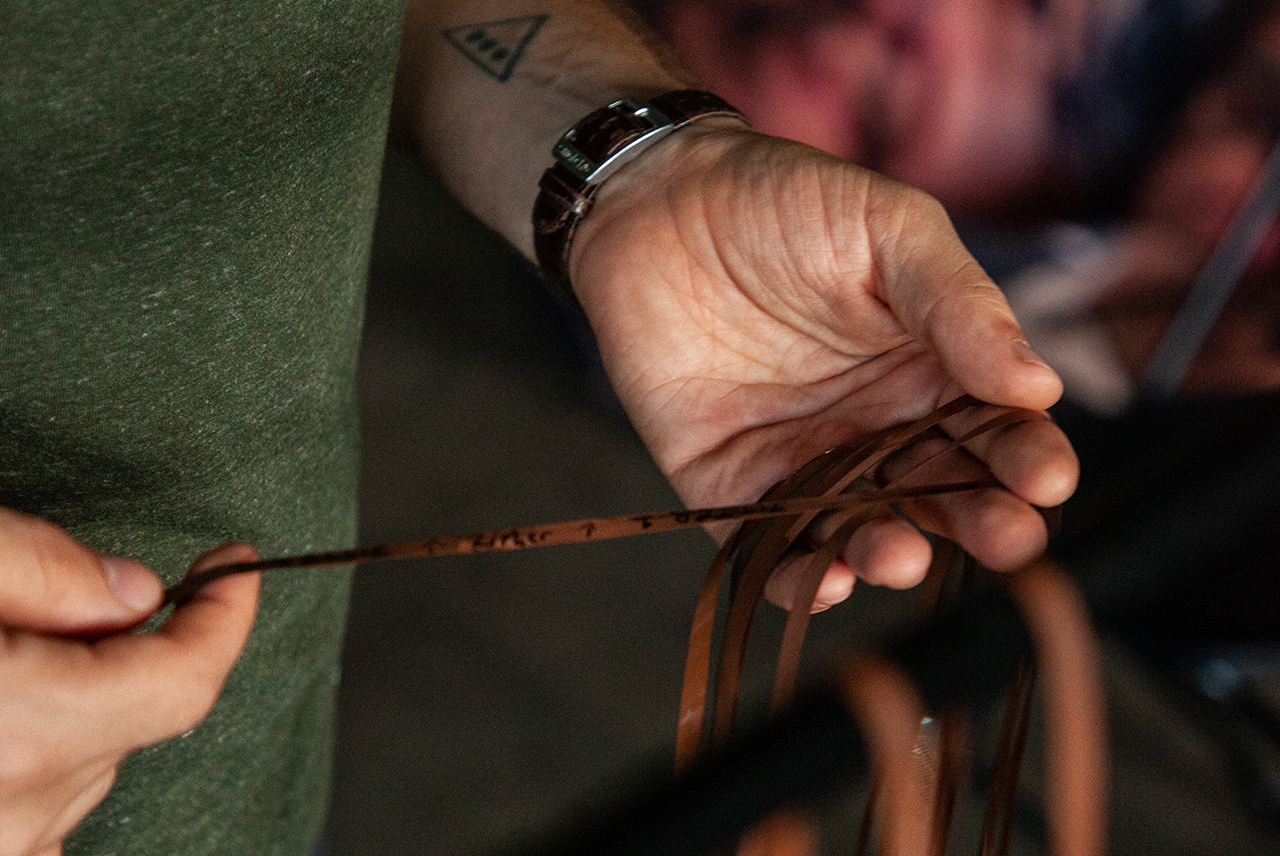 Jeremy Young with his reel to reel tape loops. Photo credit: Alison Schopmeyer.
Jeremy Young with his reel to reel tape loops. Photo credit: Alison Schopmeyer.
Do each of you play specific instruments or synths or do you have a set of tools and everyone does a bit of everything?
Well, Ian's the pianist. nobody steps on those toes. Jeremy kinda takes the rhythm section role and plays his oscillators (bass) and uses kitchen utensils combined with piezo'd surfaces to create beats (drums). And I use my voice to make building vocal harmonies that blossom into noise, supported by these field recordings I dub to tape. Jer and I pass off the tape responsibility but mostly we stick to our lanes.
Besides the studio creations, you also perform live. How do you manage to translate the studio work to the stage?
They often hold different places/functions. while our last full-length (IT BILLOWS UP) was actually our effort to translate our live experience in the studio but we honestly love to use the studio as a chance to craft something different. Live music and studio compositions are two wildly different beasts to me. One is just musical/emotional continuity and is born of, and never evolves past, a series of moments. The studio record is an opportunity to evolve over long periods of time, a back-and-forth conversation, a practice.
And speaking of studio work, you’ve done a number of albums and EPs on one of my favorite labels, Youngbloods out of NY. Tell me about that relationship, how did you meet Nick?
Well, actually Nick had organized a late-night show at Trans-Pecos (a really cool DIY venue in Queens) that followed our concert. He got there early enough to catch our set and approached us after the show and asked if we wanted to release something on Youngbloods. And the rest is history.
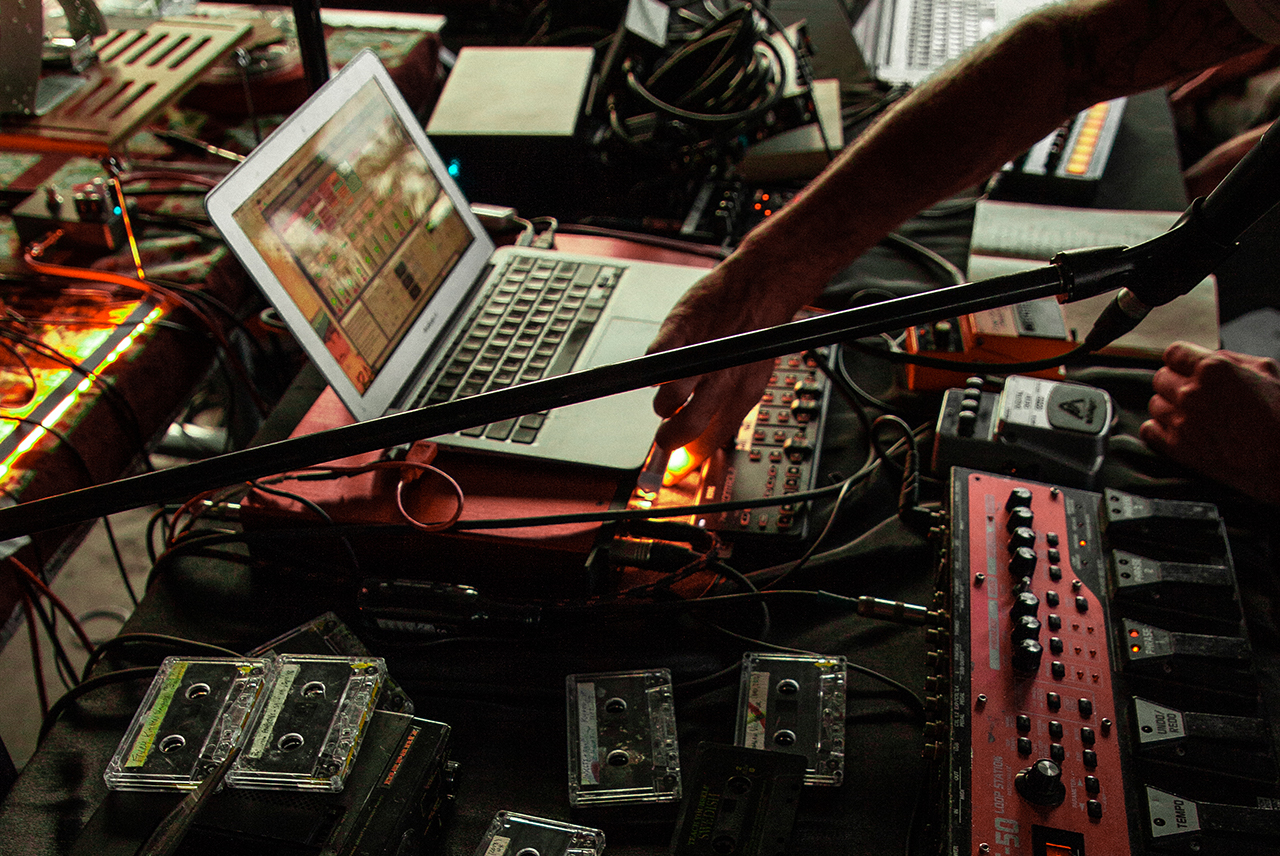 "[Live performance] is just musical/emotional continuity and is born of, and never evolves past, a series of moments." - Jesse Perlstein. Photo credit: Alison Schopmeyer.
"[Live performance] is just musical/emotional continuity and is born of, and never evolves past, a series of moments." - Jesse Perlstein. Photo credit: Alison Schopmeyer.
I especially like the covers for the Patterns LP. Who did those?
Oh, you can thank Nicholas Concklin for that (½ of Youngbloods). He worked tirelessly on trying to figure out a way to create a cover that interacted with the PVC bag so that when you pulled the record out of its sleeve, the image would move. It totally worked! But I kind of like the still image the best.
For your last album with Youngbloods, you offered a premium package with an art book alongside the record. Are visuals quite important for you?
I think of our mostly wordless music as stories and memories. Sometimes the picture can be painted in your mind but its always nice to see how the sound can be interpreted into visuals by artists. That was the genesis of the Book. I think sometimes it’s hard to only employ ONE of our senses in response to something. We have collaborated with scent artists in the past, dancers, filmmakers, painters, and interactive room installations, to engage more than just the ears of our audience. With a record, it can feel very limited and 2-D and also people just put on music and go about their lives (wash dishes, talk/text on the phone, work out, whatever) but in order to get them to really listen, it’s good to capture another sense...to engage them on more dimensions. I think an art book is just a way to create that focus and purpose...to manufacture a listening experience that is more holistic.
With some of your records on wax, how important is vinyl for you?
Well, we definitely court a lot of audiophiles so Vinyl is kind of synonymous with Listening to music in a physical way. While tapes have made a comeback (and CD’s are surviving in a European/Japanese market), Vinyl feels like the only way to really convince someone to BUY our music. It’s physical proof that the sound exists. I grew up playing my dad’s records (and then my own store-bought once I was old enough) and always saw them as something more like a relic. Like, if it was on vinyl, it was Important. And I still think that’s true! There’s some magic in deciding (or having someone else decide) that your music is worth being cut into this material that can last lifetimes and be the message-in-a-bottle that outlasts civilizations… I mean they sent a fucking golden record into space!
I’m incredibly curious about the name. What does Sontag Shogun stand for? Sounds Japanese…
Yeah, we get that a lot. So it’s really just a combination of two things I love: Susan Sontag’s literature and 1970’s Japanese movies about the shogunate. I had been reading “Regarding the Pain of Others” and watching Sonny Chiba films and kinda overlaid them in my mind, and then painted it (and used it for one of our first show-flyers). The name just stemmed from the mash-up.
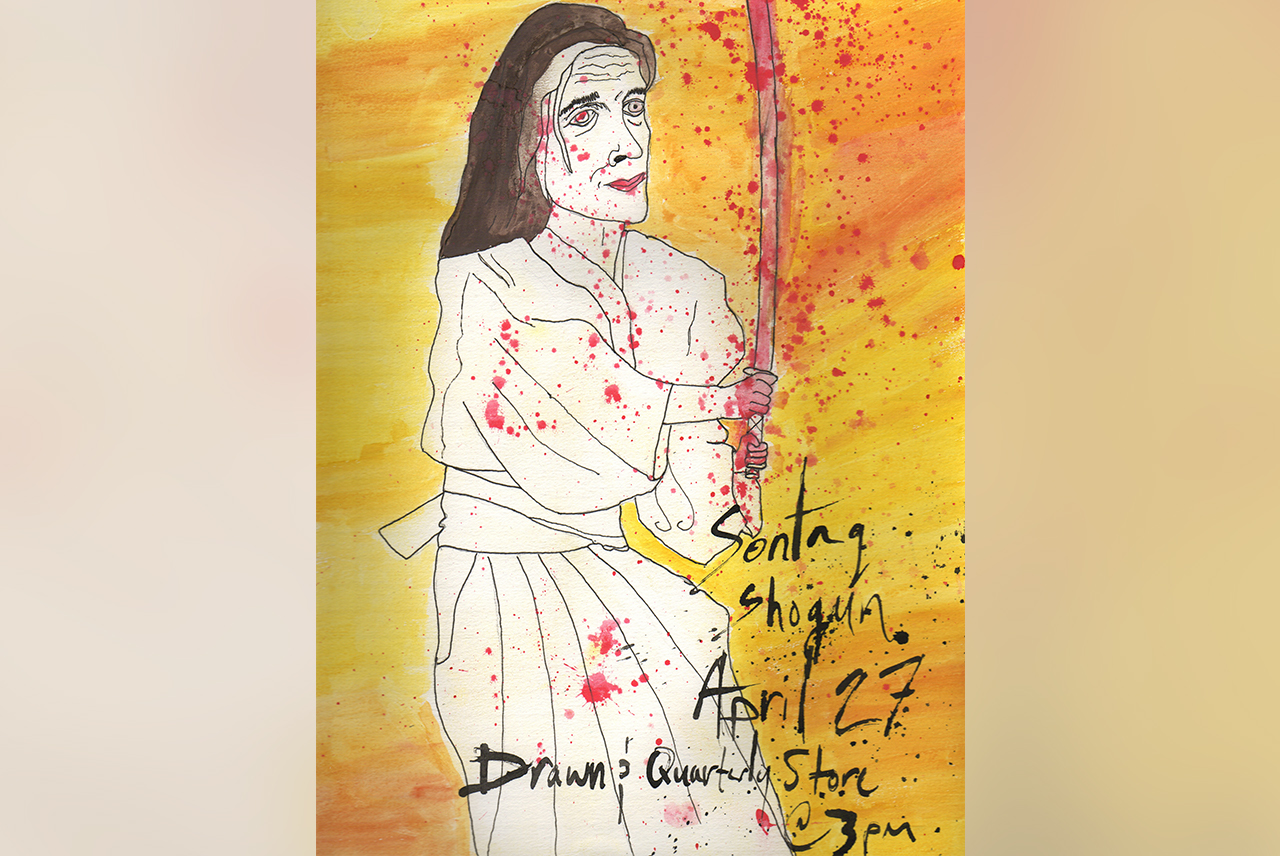 Jesse Perlstein's painting was used as one of their first show flyers.
Jesse Perlstein's painting was used as one of their first show flyers.
What’s next for Sontag Shogun? Any new music coming out on Youngbloods or elsewhere that we should look out for?
So we have a few things in the pipeline: we have a track coming out soon on a compilation produced by Portland-based label Beacon Sound. We are also working on a full-length with Finnish experimental darling Lau Nau that’s slated for release in 2021 (although, who can even tell how time works in the world anymore.)
As for Youngbloods, we just released 2 EP’s of remixes in April/May. They are all reinterpretations of songs from our third studio album IT BILLOWS UP, which Youngbloods also released. You can check em out on Spotify or Bandcamp.
Well, thanks for taking the time and for this incredibly soulful mix. I wish you all the best in all your future creative endeavors.
Sontag Shogun's latest release is a 2 part volume series of remixes from their latest EP It Billows Up, and it's out on Youngbloods. Support them by getting it here.
Tracklist
- Moses Sumney - Colouour [Jagjaguwar]
- Sade - I Couldn’t Love You More [Epic]
- Cassowary - Price Went Up [Fat Possum]
- Witch Prophet - Darshan [Heart Lake Records]
- Susso - Mamadou [Soundway Records]
- Victor Bermon - First Encounters [Hefty Records]
- Sontag Shogun - Kienast Dans Un Park (Nick Schofield Remix) [Youngbloods]
- Yo La Tengo - Green Arrow [Matador]
- Christine Ott - Mariposas [Nahal]
- Olivia Belli - Countdown [Memory Recordings]
- Christina Vantzou - Pillar 5 [Kranky]
- Sontag Shogun - Medewi, After The Rain (Julia Kent Remix) [Youngbloods]
- Sudan Archives - Down On Me [Stones Throw]
- Frank Ocean - Pink + White [Boys Don’t Cry]
- Duendita - Pray [The Vanguarde Craft and Creative]
- Owen Pallett - The Sky Behind The Flag [Domino / Secret City]
- FKA Twigs - Kicks [Young Turks]
- Fatima Al Qadiri - Alleil [Milan Records]
Follow Sontag Shogun
Instagram | Soundcloud | Facebook
Subscribe to Subtempo Radio
Available on Itunes | Soundcloud
